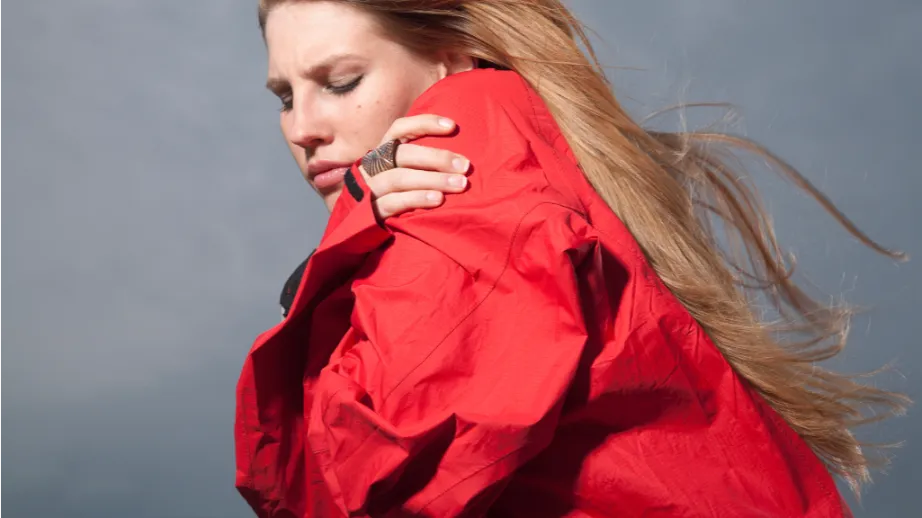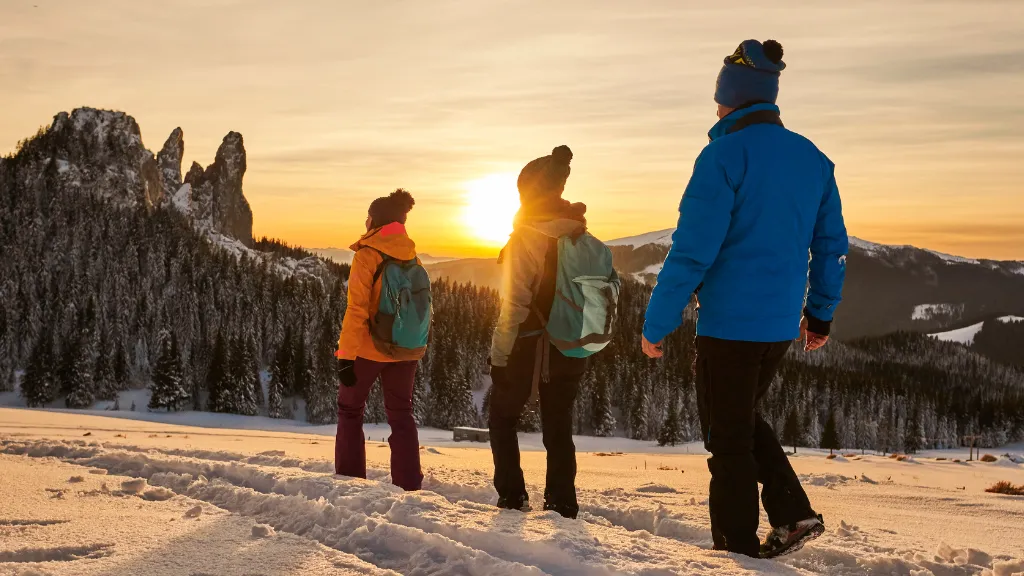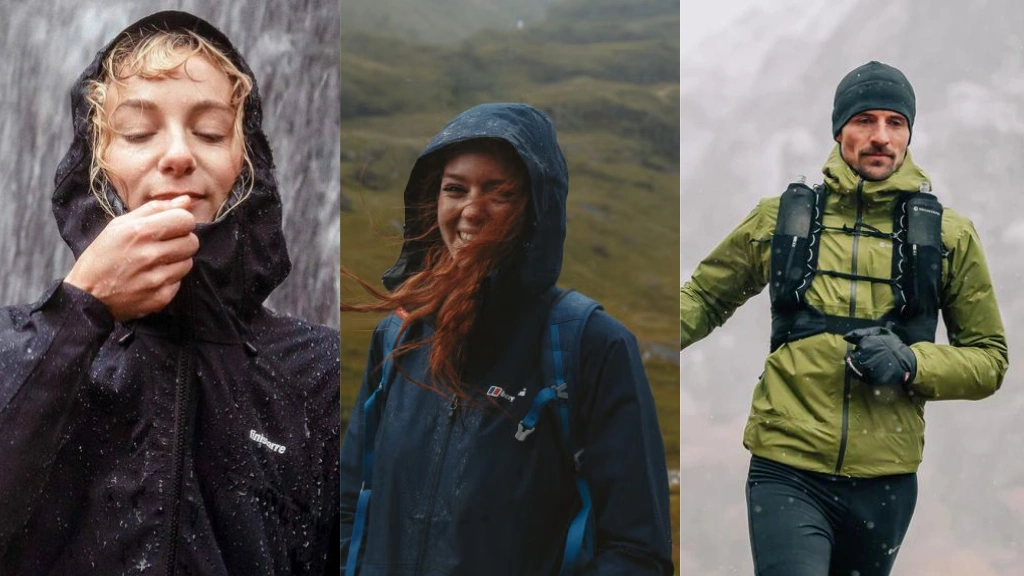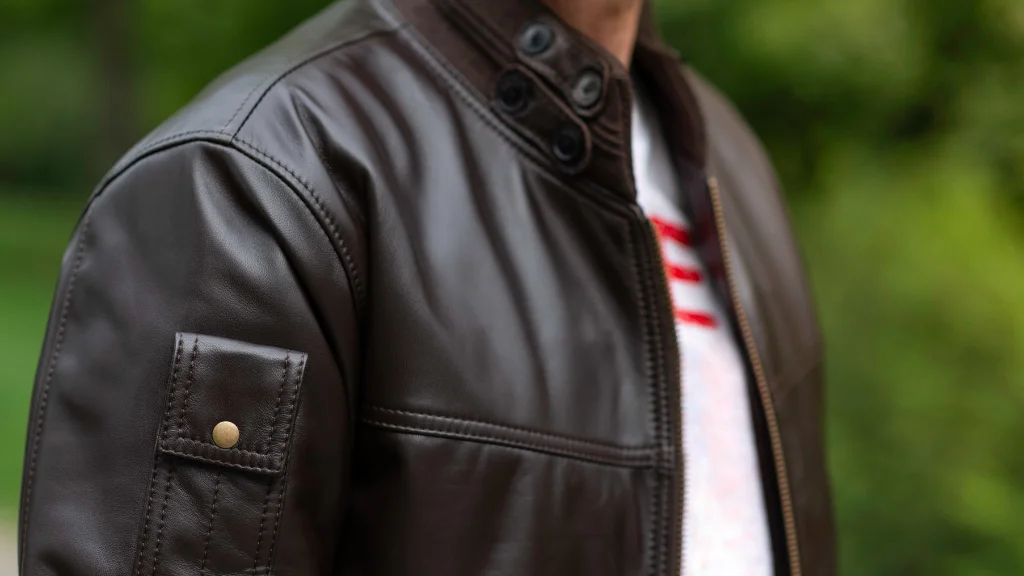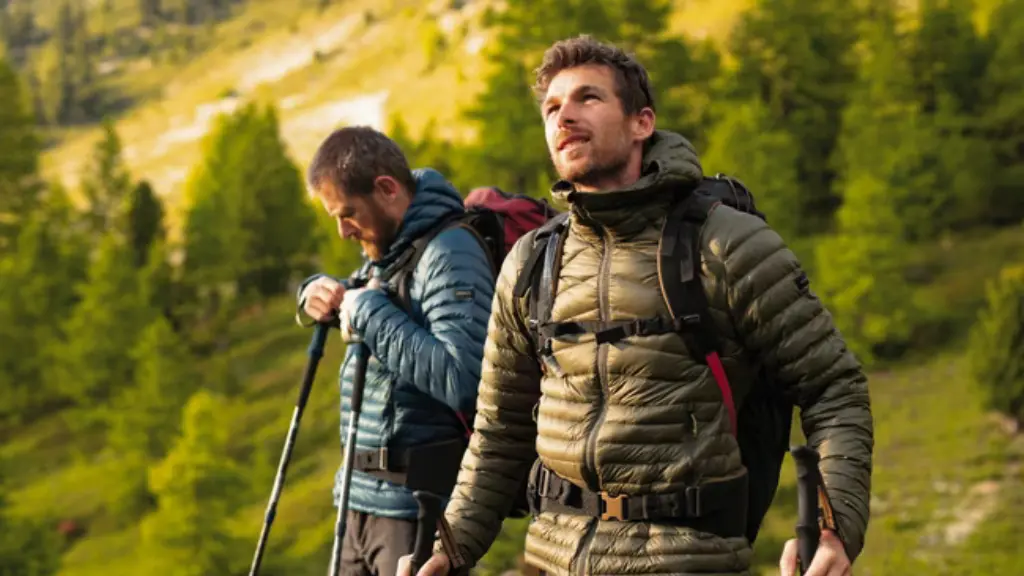I’m that hiker who brings my wind jacket on almost every hike. It’s too light not to, and when you hit that peak, drop your pack, and suit up, you can actually enjoy your lunch with a view rather than racing back down because you’re being pelted by every gust of wind.
But what about rain jackets – the ones that are also marketed as windbreakers? Aren’t they just a windbreaker with waterproofing? Well, yes and no. While a rain jacket does offer waterproofing, it often sacrifices breathability.
So, here’s the million-dollar question: Do you need a windbreaker on your hikes, or are you looking for something with a bit more rain protection? Or maybe you’re in the market for both? Let’s break it down.
Is a Windbreaker Jacket Good for Hiking?
A windbreaker jacket is definitely good for hiking! It’s designed to protect you from strong winds and light rain, making it a decent outer layer for any outdoor adventure.
With its lightweight and breathable material, it won’t weigh you down or overheat you during your hike.
Just keep in mind that windbreakers are not meant for heavy rain or extreme weather conditions, where a rain jacket would be more suitable.
Let’s take a closer look at both options to help you decide which one is the best fit for you.
Windbreaker vs. Rain Jacket: Which Is Better?
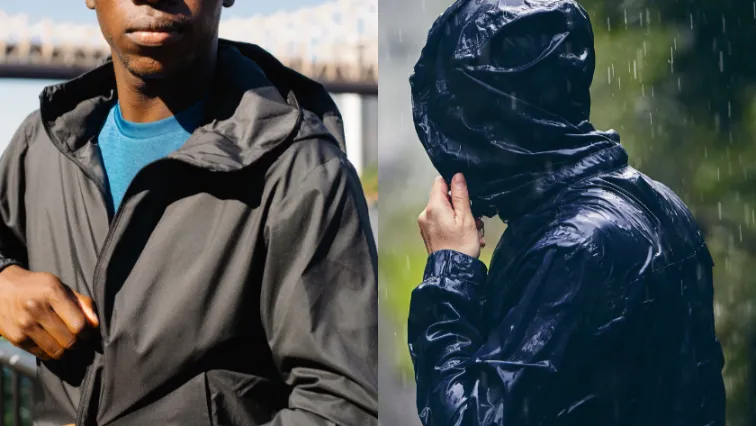
The choice between a windbreaker and a rain jacket is purely dependent on the weather conditions you’ll encounter on your hike.
If you expect medium to heavy rain, a rain jacket would be the better option as it offers better water resistance.
However, if strong winds and light rain are your main concerns, a windbreaker jacket will do the job just fine.
When Rain Checks In, You Check Your Gear
If you’ve only got a windbreaker, you might find yourself in a soggy situation during heavy rain. Rain jackets are your go-to here because they are, well, waterproof. Windbreakers are not.
While windbreakers may keep some light rain and moisture at bay, they are not designed for heavy downpours or prolonged exposure to wet conditions.
However, in situations where you’re only expecting a light drizzle or gentle sprinkle, windbreakers can be just the right choice. They provide enough protection from moisture without being too heavy or bulky.
They also allow for better ventilation so you don’t overheat while still providing some level of water resistance.
What About the Wind?
Here’s where windbreakers shine. They’re designed to do exactly what their name suggests – break the wind. This can range from a gentle breeze to those howling winds that try to push you back down the trail you just hiked up.
They’re usually lighter and less bulky than rain jackets, making them a solid choice for days when rain isn’t in the forecast.
Rain jackets can also offer some level of wind protection but may not be as effective as a dedicated windbreaker.
The Sweat Factor
Windbreakers are better at keeping sweat to a minimum since they’re not designed to keep out water. However, it’s still important to choose a windbreaker made from breathable materials to avoid getting too sweaty.
Rain jackets are fantastic for keeping water out, but, unfortunately, they’re also pretty good at keeping sweat in. Because they’re waterproof, there’s not a lot of breathing happening, which means you might end up as wet on the inside as you would have been without the jacket.
Ponchos are a great alternative to the rain jackets as they can offer a bit more breathability with their open bottom design, but let’s be honest, they’re not everyone’s first choice.
Making the Choice
How do you decide between rain jackets and windbreakers? There’s no wrong choice, just what’s right for you at the moment. Both have their place in your outdoor wardrobe, and sometimes, the best answer is to pack both (if you can).
Here are a few tips:
- Check the weather forecast meticulously before heading out. If rain is a high possibility, lean towards a rain jacket.
- Consider the hike’s duration and your tolerance for discomfort. For quick jaunts in uncertain weather, a windbreaker might suffice. But for longer excursions, especially in colder weather, a rain jacket could be much better.
- Think about layering. Sometimes, wearing a light windbreaker over a moisture-wicking base layer can give you a good balance of protection and breathability.
Can a Windbreaker Be Used as a Rain Jacket?
Some windbreakers can be used as rain jackets to some extent as they usually come with a water-resistant finish that can actually fend off a light drizzle effectively – the kind of rain that tries to ruin your hike but isn’t quite committed to the cause. In those cases, your windbreaker can replace a rain jacket effectively.
But – and this is a big BUT – they’re not designed for continuous wet weather.
Think of it this way: If raindrops were guests at a party, your windbreaker is the bouncer that’s okay with letting a few in because they look harmless. But once the whole crowd decides to crash the party, well, your bouncer is going to be overwhelmed.
However, don’t let this discourage you from bringing your windbreaker along on those iffy weather days. It’s too light not to take, and when the rain gives you a break, you’ll be glad to have something to keep the wind at bay without making you feel like you’re wrapped in a sauna.
I’ve found that having both a dedicated rain jacket and a windbreaker in my pack covers all my bases. Yes, it’s a bit more to carry, but being prepared means I get to enjoy my hike, come rain or shine (or that annoying drizzle that can’t make up its mind).
Waterproofing a Windbreaker: Is It Possible?
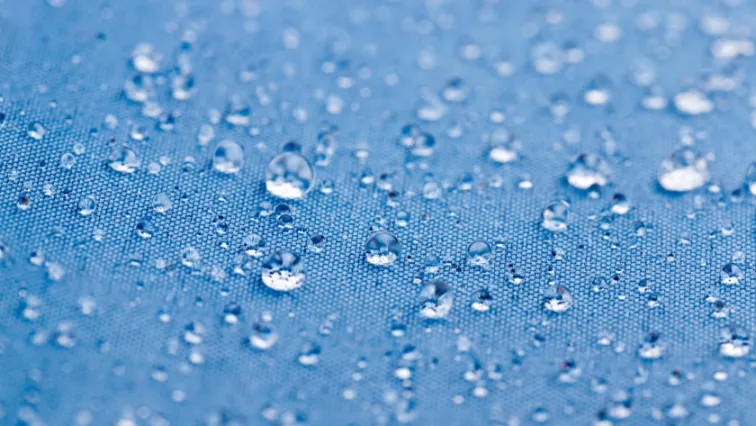
With some effort and the right products, it is possible to make your windbreaker jacket more “water-resistant”. Keep in mind that this won’t make it fully waterproof, so don’t rely on just this method to keep you dry. It’s always best to use a dedicated rain jacket for heavy or prolonged rain.
But if you’re looking for a quick fix or want to make your windbreaker more versatile, treating it with a waterproof coating can definitely help in light rain or drizzles.
In fact, every major outdoor retailer stocks some form of spray or wash-in durable water-resistant coating (DWR) that, if applied correctly, could give your windbreaker an extra layer of protection against the rain.
However, before you start applying any products, do a little detective work on your jacket. Is it a single layer (nylon for example), proudly wearing its “water repellent” badge but soaking up water like a thirsty camel?
If yes, it’s time to bring out the big guns: Nixwax products or Camp Dry made by KIWI.
These two are the most commonly used brands to waterproof outdoor clothing, and their products come as sprays or wash-in solutions. Follow the instructions on the label carefully, and you’ll soon have a windbreaker jacket that can handle light or even heavier rain with ease.
What Weather Is Best for a Windbreaker?
When the wind starts picking up speed, racing past you at 25-30 miles per hour, the windbreaker jacket will keep you protected.
It might not be chilly, but any fast wind will feel cold because it causes the water in your skin to evaporate and takes a bunch of heat with it. A good windbreaker will keep you warm and dry in this weather, especially when combined with a warm inner layer like fleece.
Are Windbreakers Worth It?
If you find yourself battling winds that could knock over a small tree, such as 25 miles per hour or more, and the rain is not heavy, then yes, a windbreaker is absolutely worth it.
However, don’t think your windbreaker has lost its place in your backpack even in the heaviest rain. It’s as light as a feather and can come in super handy when the rain gives you a break, but the wind decides it’s not done playing yet.
That’s why I always pack both. It might seem like I’m preparing for every possible weather scenario short of a snowstorm in July, but being prepared means I get to enjoy my hike no matter what.

Lukas Heller
Hey there! I’m Lukas, co-founder of BigfootHiking.com, alongside my adventurous wife Martha. Originally from Germany, I landed in Phoenix, Arizona, in 2015, where I’ve been scouting out new trails ever since (though they’re getting scarce!). By day, I’m a software developer, but my heart belongs to hiking – I’m always plotting our next trip. When I’m not coding or on the trails, you’ll find me hanging out with our Pit Bull, Zeus.

